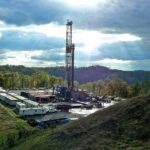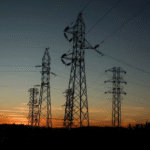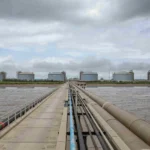Energy News Beat
California’s electric grid, often celebrated for its renewable energy ambitions, is buckling under the weight of its own complexity and external pressures. Nowhere is this more evident than in the Kern River Valley, where a surge in Public Safety Power Shutoffs (PSPS) has left residents and businesses reeling. With over 20 power shutoffs in 2025 alone, the region highlights a broader truth: California’s grid is not resilient, and hopes for its stabilization are fading fast. This article explores the Kern River Valley’s struggles, examines California’s grid reliability challenges, and compares the state’s performance to its neighbors, revealing a system on the brink.
This article highlights some key points raised in the Substack article “Are Microgrids and power sources only for those who can afford them?” California’s energy problems have also been coved on the Energy News Beat Podcast many times, and the latest episode was with Ronald Stein and Mike Umbro. “California’s Energy Policies are a Problem: A Major National Risk?”
Kern River Valley: A Community in the Dark
In the Kern River Valley, power outages have become a way of life. According to a recent report, the region endured more than 20 PSPS events in 2025, triggered by Southern California Edison (SCE) to mitigate wildfire risks during high-wind conditions. These shutoffs, often lasting days, have disrupted daily life and crippled local businesses. Residents like Debbie Starr, who relies on electricity for medical equipment, face life-threatening challenges, while businesses report significant revenue losses due to closures and spoiled inventory.
The frequency and duration of these outages—sometimes affecting 17,000 people for days—have sparked frustration over SCE’s communication and preparedness. Kern County has stepped in with cooling centers and resources, but these are stopgap measures. The region’s aging infrastructure, combined with its vulnerability to wildfires, exacerbates the problem. Posts on X reflect the community’s anger, with residents decrying the lack of reliable alternatives and poor coordination during shutoffs.
California’s Grid: A Systemic Crisis
The Kern River Valley’s plight is a microcosm of California’s broader grid challenges. Managed by the California Independent System Operator (CAISO), the state’s grid struggles to balance a renewable-heavy energy mix—59% renewable by 2021, with 100% clean energy for parts of 219 days in 2024. Yet, this transition has exposed vulnerabilities. Solar and wind variability, insufficient battery storage, and aging transmission lines create a fragile system prone to disruptions.
Climate change amplifies these issues. Extreme heat, wildfires, and droughts—now annual events—threaten infrastructure and strain supply. CAISO notes that “climate change is causing extreme heat, drought, and wildfires at ever-increasing frequency and intensity, introducing new risks to grid resiliency.” Wildfires, like the 2021 Bootleg Fire in Oregon, have disrupted regional power flows, and similar risks persist in California.
Policy decisions further undermine reliability. Governor Newsom’s 2025-2026 budget cut $423 million from grid reliability programs, including Demand Side Grid Support (DSGS) and Distributed Electricity Backup Assets (DEBA). The state’s reliance on extending Diablo Canyon’s nuclear operations past 2025 reflects a lack of scalable clean energy alternatives. Meanwhile, CAISO’s frequent curtailment of solar generation—wasting clean energy due to oversupply—highlights the storage shortfall.
Uptime and Reliability: California vs. Neighbors
Specific uptime statistics for California’s grid in 2025 are not publicly detailed in available sources, a gap that raises questions about transparency. The U.S. Energy Information Administration (EIA) tracks outages, but 2025 data for California and neighboring states (Nevada, Arizona, Oregon) is absent from the references. However, we can infer trends from recent performance and regional differences.
-
California: Between 2020 and 2022, climate-driven outages prompted emergency measures, including gas plant extensions and demand-response programs. In 2024, CAISO reported no Flex Alerts, but officials warned of “tight grid conditions” during heatwaves or unexpected disruptions. The Kern River Valley’s 20+ PSPS events in 2025 suggest significant localized unreliability, particularly in rural areas with outdated infrastructure.
-
Nevada: With a simpler grid reliant on natural gas and imports, Nevada faces fewer renewable integration challenges. Wildfire risks exist, but the state’s lower population density reduces strain. Outage data is scarce, but Nevada’s grid appears more stable than California’s.
-
Arizona: A mix of nuclear, gas, and solar supports Arizona’s grid, which benefits from less aggressive decarbonization mandates. Heatwaves pose risks, but outages are less frequent than in California.
-
Oregon: Like California, Oregon faces wildfire-related disruptions, as seen with the 2021 Bootleg Fire. However, its smaller grid and population reduce the scale of reliability issues.
Without precise uptime percentages, California’s grid likely underperforms Arizona and Nevada, which face fewer policy-driven constraints, while Oregon’s challenges are comparable but less severe. The lack of 2025 data underscores the need for better reporting to assess true reliability.
Why Stabilization Remains Elusive
Several factors perpetuate California’s grid fragility:
-
Renewable Integration Gaps: Daily curtailment reports show persistent solar oversupply, with insufficient storage to capture excess energy. By 2045, California needs 148,000 MW of new clean capacity, but progress lags.
-
Funding Cuts: Slashed reliability budgets limit emergency response capabilities, leaving communities like Kern River Valley vulnerable.
-
Inequitable Infrastructure: Rural and low-income areas, including Kern County, face more outages due to underfunded distribution networks. A 2021 study highlighted these disparities, which persist in 2025.
-
Wildfire Mitigation Overreach: While PSPS events aim to prevent fires, their overuse disrupts lives and erodes trust. SCE’s criteria for shutoffs—based on wind and weather—often seem overly cautious, as seen in Kern River Valley.
The state’s clean energy goals (60% renewables by 2030, 100% by 2045) require $30 billion in transmission upgrades, but funding and political will are uncertain. Consumer programs like Power Saver Rewards help manage peak demand, but they can’t address systemic weaknesses.
A Contrarian Perspective: Is Progress an Illusion?
California’s energy leaders point to fewer Flex Alerts and record clean energy additions as signs of progress. Yet, the Kern River Valley’s outages and reliance on Diablo Canyon reveal a less rosy reality. Neighboring states, with less ambitious mandates, maintain more predictable grids, raising questions about California’s approach. The state’s renewable push is bold, but without robust storage, equitable infrastructure, and wildfire-resilient systems, resilience is a pipe dream.
Conclusion: A Grid in Need of Overhaul
California’s grid is a stark reminder that ambition without execution breeds fragility. The Kern River Valley’s 20+ PSPS events in 2025 underscore the human toll of an unreliable system, while statewide challenges—curtailment, budget cuts, and climate risks—dim prospects for stability. Compared to Arizona and Nevada, California’s grid faces unique pressures from its clean energy transition. To move forward, policymakers must prioritize storage, restore reliability funding, and modernize rural infrastructure. Until then, Californians will remain at the mercy of a grid that’s one spark away from failure.
Energy News Beat welcomes your stories about grid outages and ideas for a more reliable energy future.
I will also be interviewing several CEOs and executives in the AI, Data Center, Oil and Gas, and investment markets soon.
Sources and Citations:
-
Surge in PSPS power shutoffs disrupts life, business in Kern River Valley, Bakersfield Californian, June 19, 2025.
-
Residents, businesses frustrated by repeated Kern River Valley power outages, 23ABC News, June 17, 2025.
-
Posts on X regarding Kern River Valley outages, June 14–19, 2025.
-
CAISO and California Energy Commission reports on renewable integration and grid reliability.
-
2021 study on inequitable grid infrastructure (referenced in original response).
Is Oil & Gas Right for Your Portfolio?
Crude Oil, LNG, Jet Fuel price quote
ENB Top News
ENB
Energy Dashboard
ENB Podcast
ENB Substack
Need Power For Your Data Center, Hospital, or Business?
The post California’s Grid: A Fragile System with Dim Prospects for Stability appeared first on Energy News Beat.








